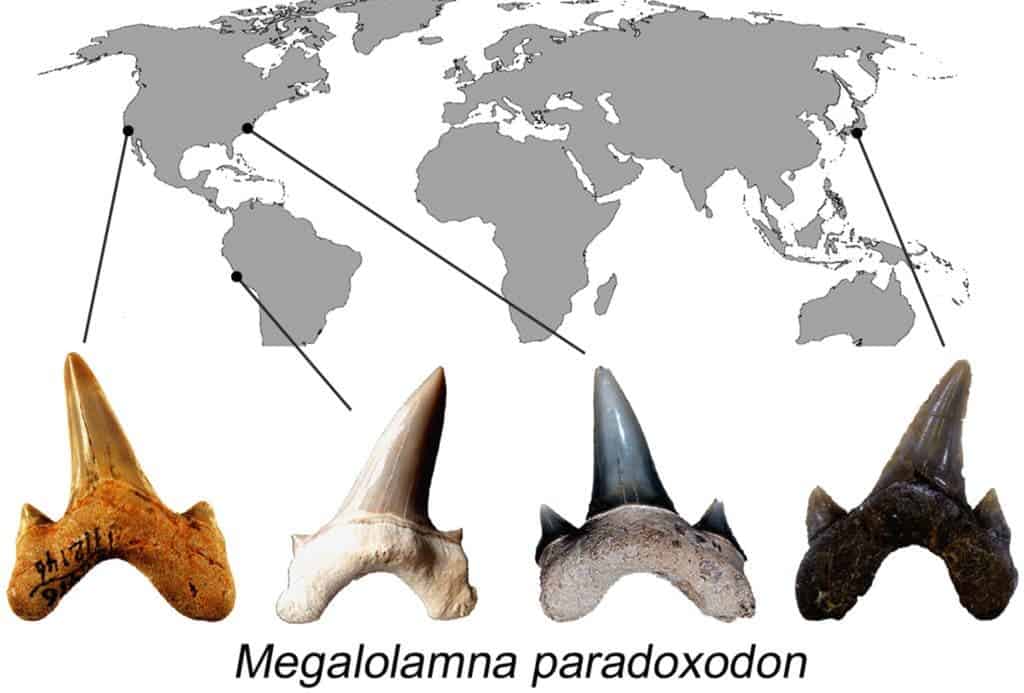
Megalolamna paradoxodon had grasping-type front teeth and cutting-type rear teeth likely used to seize and slice medium-sized fish and it lived in the same ancient oceans megatoothed sharks inhabited. (Image by Kenshu Shimada)
Some 20 million years ago, both the Atlantic and the Pacific were haunted by a huge shark the size of a car. The new species, called Megalolamna paradoxodon, was just discovered and researchers think it was related to the biggest shark that ever lived, Megalodon.
It’s very difficult to find shark fossils and it’s not that surprising if you know they’re made of cartilage, not bones. Paleontologists sometimes can find fossils of those parts of the shark made of denser cartilage like the centers of the vertebra, jaw cartilage, and the rostral node in a shark’s snout. However, maybe 99% of all known shark fossils are the teeth. In the case of Megalolamna p., five tooth samples collected from California, North Carolina, Japan, and Peru were all that scientists had at their disposal.
Shark teeth, however, are enough to learn an awful lot. Each sharks species’ teeth have a unique shape — in the case of Megalolamna p., these are shaped in a mosaic-like pattern. It helped that both front and rear teeth were found, the former used for grasping while the latter for slicing.
Megalolamna p. lived in the Miocene period, about 20 million years ago, and likely ate medium-sized fish. That’s judging from its estimated size, about 12 feet long. The researchers from DePaul University in Chicago who were responsible for the find compared the teeth to those belonging to other extinct and currently living species to come with this estimate.
“The fact that such a large …shark with such a wide geographic distribution had evaded recognition until now indicates just how little we still know about the Earth’s ancient marine ecosystem,” said Kenshu Shimada, the lead author of the study and a paleobiologist at DePaul University in Chicago.
Its size makes the ancient the shark actually smaller than the great white shark, which can grow between 15 and 20 feet in length. However, at this point, it’s very difficult to judge just how big Megalolamna p. could grow. A shark might have smaller or bigger teeth in its jaw which might not reflect the true size of the fish. More fossilized teeth might help settle it.
Megalolamna p.’s cousin, the beast of the ancient high seas called Megalodon, could grow to 60 feet in length and its bite was more powerful than T-Rex’s. Megalodon seemed to have disappeared about 65 million years ago, so that makes the two species 45 million years apart. We know little to nothing about what happened in between this time frame, how Megalodon evolved, what it turned into etc. There are a lot of unanswered questions which only more fossil findings might help settle.
Findings appeared in the journal Historical Biology.










